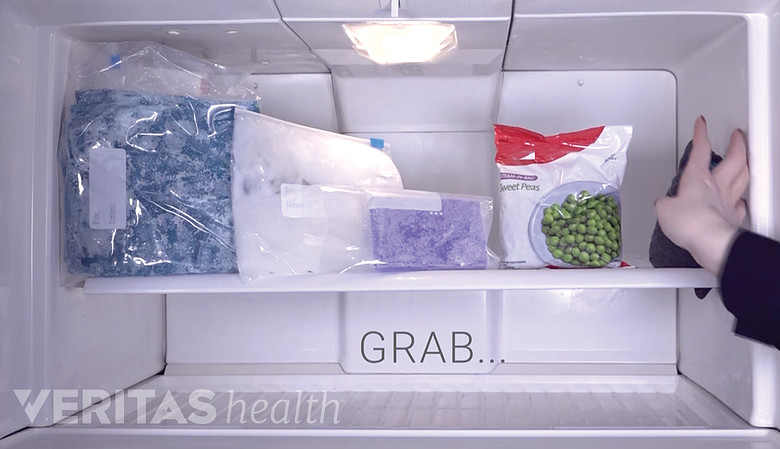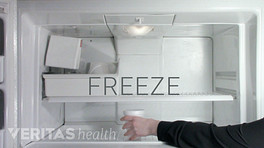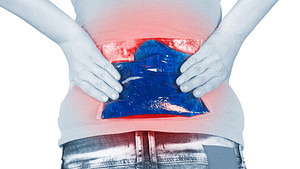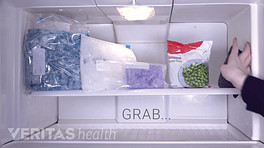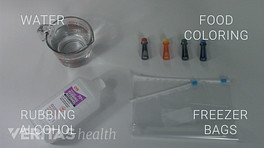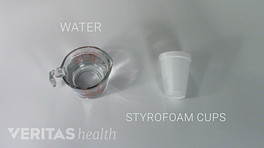Types of Ice Packs and Cold Packs
There are many types of ice packs that can be used for relief of lower back pain. All of the options are effective, and patients can select which works best for them based on personal preference, budget, and convenience.
Common types of cold packs that are effective for lower back pain include:
Reusable Cold Pack or Ice Pack
Many types of reusable ice packs (such as those filled with gel) are available at drug stores and general merchandise stores. These cold packs can be kept in the freezer ready for use when needed, and re-frozen after each use. For an inexpensive alternative, reusable cold packs can be made at home.
Here are 5 quick and easy homemade ice packs to try.
Homemade Ice Pack
To make an ice pack, simply put the desired amount of ice in a plastic bag (baggie) and squeeze the air out of the bag before sealing it. Some people like to add a little water to the ice so that the bag is not so lumpy. The bag should be wrapped in a towel before applying it to the painful area to protect the skin from ice burn. Additional alternatives include:
- A frozen towel. To make a towel into a cold pack, place a folded, damp towel in a plastic bag and put it in the freezer for ten to twenty minutes. Then take the towel out of the bag and place it on the affected area.
- Sponge. Wet a sponge and put in the freezer. After it is frozen, take it out and put it in a baggie, then wrap it in a sock or a towel before applying it to the sore back.
- Rice. Another alternative is to fill a sock with rice and place it in the freezer, as rice will get as cold as ice but does not melt when used.
- Gel-type pack. Still another alternative is to fill a baggie with liquid dishwasher detergent and freeze it, which gives it a consistency of a gel pack.
- Frozen bag of peas. If ice is needed quickly, it is easy to grab a bag of frozen peas or other vegetables out of the freezer, wrap it in a towel and apply it to the painful area.
In This Article:
Disposable Ice Packs/ Instant Ice Packs
Single use cold packs have the advantage of becoming cold almost instantly through a chemical reaction that takes place once the pack is “cracked”. Because they are ready at any time, prior planning in terms of putting the ice pack in the freezer is not needed. Another advantage is that the chemical reaction in the pack allows it to stay cold for an extended period of time while being used at room temperature. The main disadvantage of instant ice packs is that they can only be used once, making them more expensive than reusable ice packs or homemade ice packs. A variety of disposable, instant ice packs are available at most drug stores and general merchandise stores.
Simple application of a cold pack or ice placed in a plastic bag and wrapped in a towel or other protective barrier (to protect the skin from ice burn) is one of the most effective pain relief treatments available.
Watch Video: 4 Little-Known Natural Pain Relievers
Ice or a cold pack should be applied for no more than 20 minutes at a time and can be applied several times a day (e.g. up to eight or ten times in a twenty-four hour period).
Ice Application Precautions
To avoid getting an ice pack burn, be sure to limit application of ice to no more than twenty minutes and do not fall asleep lying on an ice pack.
As with all pain relief treatments, there are some cautions with applying ice and using ice therapy.
- Never apply ice directly to the skin. Instead, be sure that there is a protective barrier between the ice and skin, such as a towel.
- Limit the ice application to no more than fifteen or twenty minutes at a time.
- Ice application should be avoided by patients with certain medical conditions, such as for patients who have rheumatoid arthritis, Raynaud’s Syndrome, cold allergic conditions, paralysis, or areas of impaired sensation.
Read more about Rheumatoid Arthritis in the Spine
Ice massage and ice application is generally most helpful during the first 48 hours following an injury that strains the back muscles. After this initial period, heat therapy is probably more beneficial to the healing process.
For further reading: Pulled Back Muscle and Lower Back Strain
For some people, alternating heat therapy with cold application provides the most pain relief.
